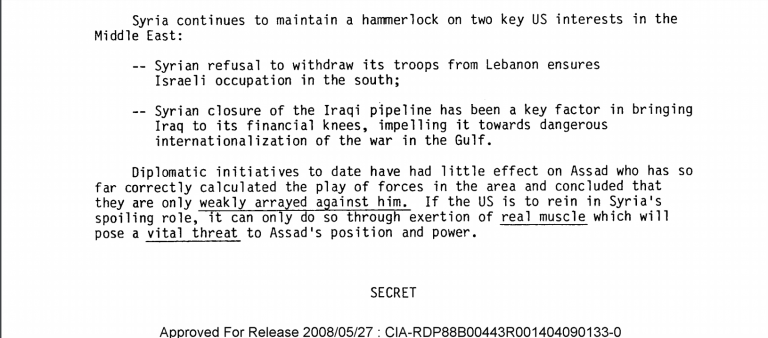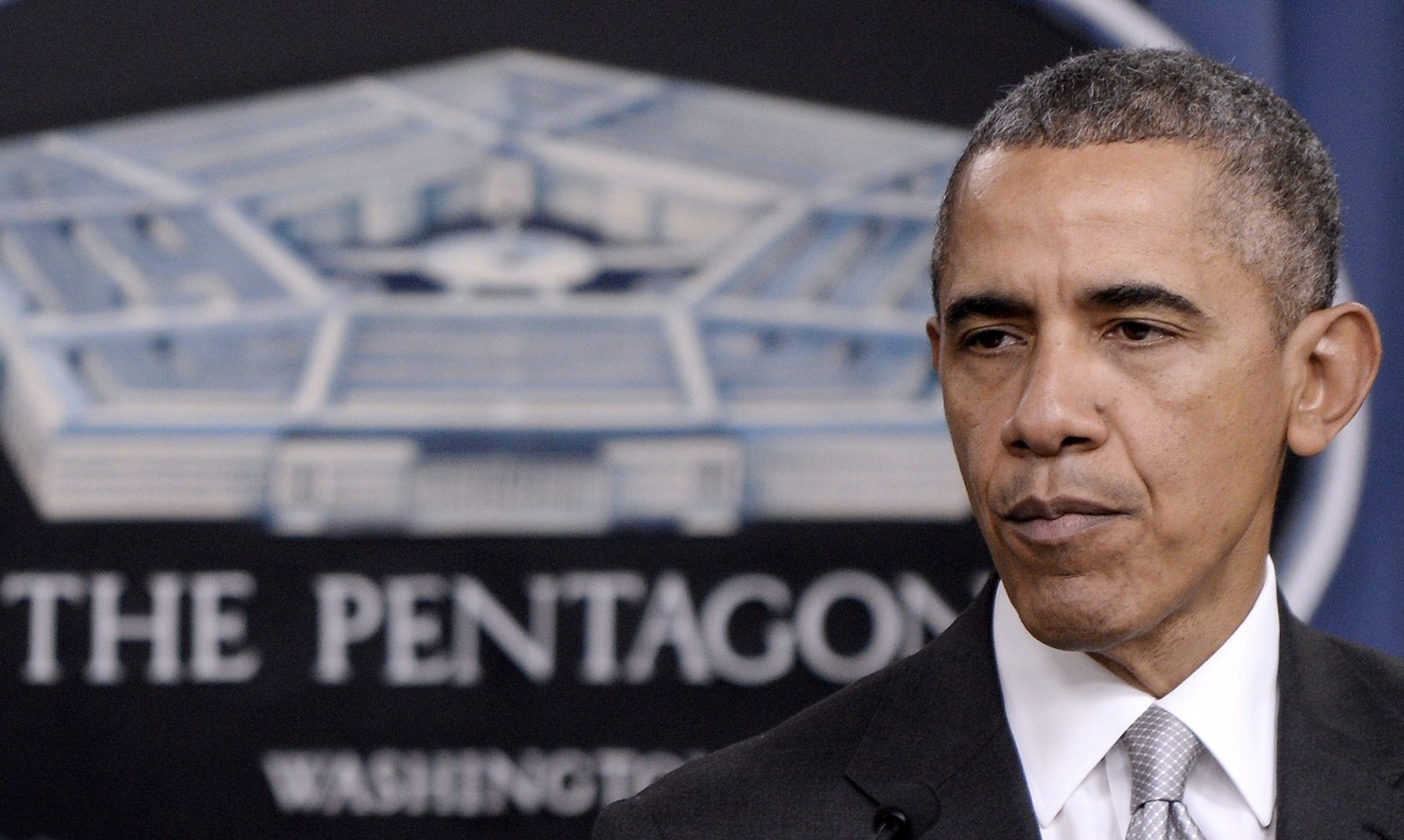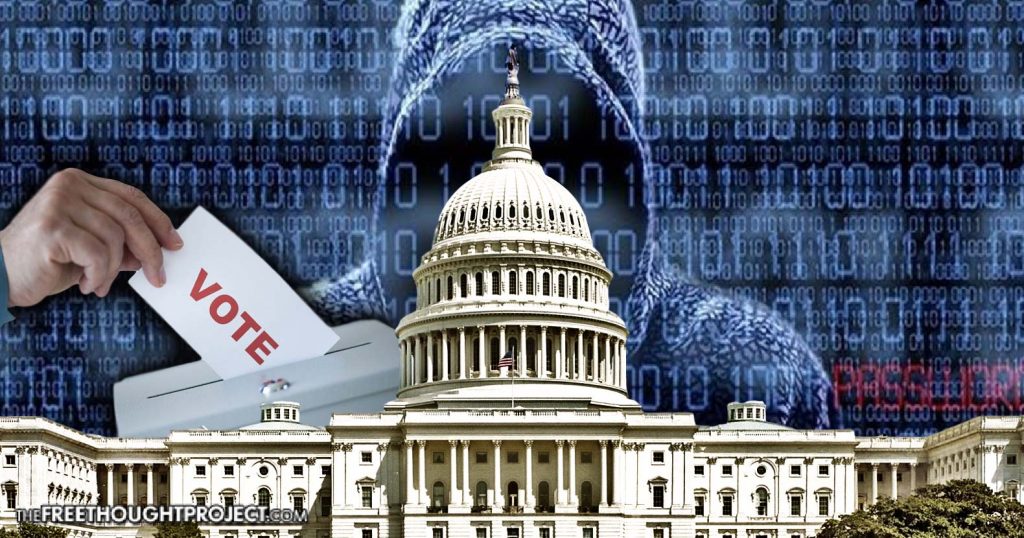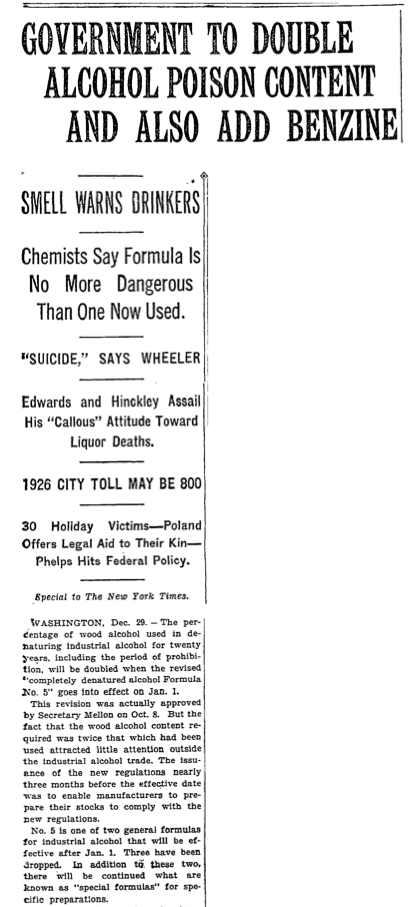A CIA document from the early 1980s details a US plan to destroy Syria — in much the same way the United States has been doing for the last few years.Geostrategically crucial Syria has been at the center of a decades-long plot by the United States to depose the sovereign government and install one supportive of goals in the Middle East must be revisited — and quickly — before the beating of war drums drowns out the truth of our government’s recently-espoused mission. President Donald Trump has repeatedly castigated President Bashar al-Assad for ordering a gruesome mass killing of civilians with chemical weapons in Khan Sheikhoun. This accusation sparked a bolstering of support for the Syrian regime from both Moscow and Tehran. “Syria at present has a hammerlock on US interests both in Lebanon and in the Gulf — through closure of Iraq’s pipeline thereby threatening Iraqi internationalization of the war. The US should consider sharply escalating the pressures against Assad through covertly orchestrating simultaneous military threats against Syria from three border states hostile to Syria: Iraq, Israel and Turkey.” While the preceding bears the names of leaders and nations familiar to current headlines, that assessment, cogently titled, “Bringing Real Muscle to Bear Against Syria,” from former CIA officer Graham Fuller in actuality discusses Syria under Assad’s predecessor — his father, Hafez al-Assad — and is dated September 14, 1983, amid the Iran-Iraq War. [pdf-embedder url=”https://commonsenseevaluation.com/wp-content/uploads/2017/04/CIA-RDP88B00443R001404090133-0.pdf”] As the six-page document continues,
With Iraq seeking to enjoin support internationally in the war, the U.S. had to scramble to prevent the shutdown of a pipeline — a dilemma Fuller suggests could be alleviated through a change in narrative to present Syria as a more deviant enemy than even Iran. That, alone, would have changed the face of the war bearing the names of the two principal adversaries — Sunni majority, Iraq, and Syria-allied, Shi’a, Iran. Fuller asserted, “The US should consider urging Iraq to take the war to the other key source of its predicament: Syria.” Further, he continued, “The US should consider sharply escalating the pressures against Assad [Sr.] through covertly orchestrating simultaneous military threats against Syria from three border states hostile to Syria: Iraq, Israel and Turkey. Iraq, perceived to be increasingly desperate in the Gulf war, would undertake limited military (air) operations against Syria with the sole goal of opening the pipeline. Although opening war on a second front against Syria poses considerable risk to Iraq, Syria would also face a two-front war since it is already heavily engaged in the Bekaa, on the Golan and in maintaining control over a hostile and restive population inside Syria. “Israel would simultaneously raise tensions along Syria’s Lebanon front without actually going to war. Turkey, angered by Syrian support to Armenian terrorism, to Iraqi Kurds on Turkey’s Kurdish border areas and to Turkish terrorists operating out of northern Syria, has often considered launching unilateral military operations against terrorist camps in northern Syria. Virtually all Arab states would have sympathy for Iraq. “Faced with three belligerent fronts, Assad would probably be forced to abandon his policy of closure of the pipeline. Such a concession would relieve the economic pressure on Iraq, and perhaps force Iran to reconsider bringing the war to an end. It would be a sharpening blow to Syria’s prestige and could effect the equation of forces in Lebanon.” In context, then-President Ronald Reagan faced pressure both to insert military power in Lebanon — a theater of stated neutrality for the U.S. — and to prohibit actual military assistance in the fraught regional entanglement. That is, until a suicide bomber decimated a U.S. Marines barracks encamped at an airport in Beirut, killing hundreds — just one month subsequent to the date on Fuller’s Syria action plan. Micah Zenko, Senior Fellow at the Council on Foreign Relations — an albeit establishment- and Deep State-connected think tank — in “When America Attacked Syria,” wrote in 2012: “The October 23, 1983, suicide truck bombing of the Marine barracks at the Beirut International Airport would kill 241 U.S. military personnel; simultaneously, another suicide bomber killed fifty-eight French servicemen of the MNF several kilometers away. (Two weeks later, yet another truck bomb exploded in the Israeli military headquarters in Tyre, killing sixty.) A FBI forensics assessment called the Marine barracks bombing the ‘biggest non-nuclear explosion since World War II.’ According to a Pentagon commission formed to investigate the attack, it was ‘tantamount to an act of war using the medium of terrorism.’ Within weeks, the CIA determined that ‘the bombings…of the United States and French MNF headquarters were carried out by Shia radicals, armed, trained, and directed by Syria and Iran.’” That the CIA — master meddler in the affairs of sovereign nations — determined fault for the bombings rested with Syria and Iran left both plausibly responsible, with public perception largely following suit. That a situation eerily similar — in behind-the-scenes string-pulling and long-term U.S. commitment to deposing an Assad from rule in Syria — appears to be playing out nearly three-and-a-half decades later, bellows resoundingly on failures of interventionist foreign policy. Or, perhaps, its successes. “Such a threat must be primarily military in nature. At present there are three relatively hostile elements around Syria’s borders: Israel, Iraq and Turkey. Consideration must be given to orchestrating a credible military threat against Syria in order to induce at least some moderate change in its policies,” Fuller explained in the document. “This paper proposes serious examination of the use of all three states – acting independently – to exert the necessary threat. Use of any one state in isolation cannot create such a credible threat.” Syria is now a landmine for the Trump administration — as it has been in varying intensity for a lengthy succession of presidents before.
|
Over the last two decades, the Pentagon has lost an astonishing $10 trillion dollars… and the Defense Department has no idea where it went!Over a mere two decades, the Pentagon lost track of a mind-numbing $10 trillion — that’s trillion, with a fat, taxpayer-funded “T” — and no one, not even the Department of Defense, really knows where it went or on what it was spent. Even though audits of all federal agencies became mandatory in 1996, the Pentagon has apparently made itself an exception, and a full 20 years later stands firmly resolute in never having complied. Defense officials insist an audit would take too long and ironically cost too much. “Over the last 20 years, the Pentagon has broken every promise to Congress about when an audit would be completed,” Rafael DeGennaro, director of Audit the Pentagon, told the Guardian recently. “Meanwhile, Congress has more than doubled the Pentagon’s budget.” President Trump’s newly-proposed budget seeks to toss an additional $54 billion into the evidently bottomless pit. Without the mandated audit, the Department Of Defense could be purchasing damned near anything, at any cost, and use, or give, it — to anyone, for any reason. Officials with the Government Accountability Office and Office of the Inspector General have catalogued egregious financial disparities at the Pentagon for years — yet the Defense Department grouses the cost and energy necessary to perform an audit in compliance with the law makes it untenable. Astonishingly, the Pentagon’s own watchdog tacitly approves this technically illegal workaround — and the legally gray and, yes, literally, on-the-books-corrupt practices in tandem — to what would incontrovertibly be a most unpleasant audit, indeed. Take the following of myriad examples, called “Plugging,” for which Pentagon bookkeepers are not only encouraged to conjure figures from thin air, but, in many cases, they would be physically and administratively incapable of performing the job without doing so — without ever having faced consequences for this brazen cooking of books. Reuters reported the results of an investigation into Defense’s magical number-crunching well over three years ago, on November 18, 2013 — detailing the illicit tasks of 15-year employee, “Linda Woodford [who] spent the last 15 years of her career inserting phony numbers in the U.S. Department of Defense’s accounts.” Woodford, who has since retired, and others like her, act as individual pieces in the amassing chewed gum only appearing to plug a damning mishandling of funds pilfered from the American people to fund wars overseas for resources in the name of U.S. defense.
Where a number of disparities could be corrected through hurried communications, a great deal — thousands each month, for each person on the task — required fictitious figures. Murkily deemed, “unsubstantiated change actions” — tersely termed, “plugs” — this artificial fix forcing records into an unnatural alignment is common practice at the Pentagon. Beyond bogus books, the Pentagon likely flushed that $10 trillion in taxes down the toilet of inanity that is unchecked purchasing by inept staff who must be devoid of prior experience in the field of defense. This tax robbery would eclipse the palatability of blood money — if it weren’t also being wasted on items such as the 7,437 extraneous Humvee front suspensions — purchased in surplus over the inexplicable 14-year supply of 15,000 unnecessary Humvee front suspensions already gathering warehouse-shelf dust. And there are three items of note on this particular example, of many: One, the U.S. Department of Defense considers inventory surpassing a three-year supply, “excessive.” Two, the stupefying additional seven-thousand-something front suspensions arrived, as ordered, during a period of demand reduced by half. Three, scores of additional items — mostly unaccounted for in inventory — sit untouched and aging in storage, growing not only incapable of being used, but too dangerous to be properly disposed of safely. Worse, contractors greedily sink hands into lucrative contracts — with all the same supply-based waste at every level, from the abject disaster that is the $1 trillion F-35 fighter program, to the $8,123.50 shelled out for Bell Helicopter Textron helicopter gears with a price tag of $445.06, to the DoD settlement with Boeing for overcharges of a whopping $13.7 million. The latter included a charge to the Pentagon of $2,286 — spent for an aluminum pin ordinarily costing just $10 — the irony of whose 228.6 percent markup cannot be overstated. Considering all the cooking of numbers apparently fueled with burning money stateside, you would think Defense channeled its efforts into becoming a paragon of economic efficiency when the military defends the United States. Overseas. From terrorism. And from terrorists. And terrorist-supporting nations. But this is the Pentagon — and a trickle of telling headlines regularly grace the news, each evincing yet another missing shipment of weapons, unknown allocation of funds, or retrieval of various U.S.-made arms and munitions by some terrorist group deemed politically less acceptable than others by officials naming pawns. In fact, so many American weapons and supplies lost by the DoD and CIA become the property of actual terrorists — who then use them sadistically against civilians and strategically against our proxies and theirs — it would be negligent not to describe the phenomenon as pattern, whether or not intent exists behind it. For now the painstaking audit imperative to Department Of Defense accountability remains only a theory… while the Pentagon’s $10 trillion sits as the world’s largest elephant in apathetic America’s living room.
|
While The Mainstream Media Focuses On Russia, The Government’s Own Data Shows U.S. Interfered In 81 Elections
While the US spin machine hurls accusations about Russian election meddling, it’s worth nothing the US is a seasoned pro at interfering in elections.
Ask an average American who makes a habit of following government-mouthpiece corporate media about interference in national elections and you’ll likely elicit a nebulous response concerning Russian hackers and a plan to install Donald Trump in the White House — but you probably won’t hear a single syllable pertaining to United States government’s actual attempts to do the same.
On Monday, FBI Director James Comey confirmed for the first time publicly the bureau is officially investigating hotly contentious allegations of Russian meddling in the U.S. election — but, even if proven true, such geopolitical escapades better characterize the routine behavior of accuser than of accused.
“The F.B.I., as part of our counterintelligence effort, is investigating the Russian government’s efforts to interfere in the 2016 president election,” the director announced, adding the bureau would conduct a probe to discern whether Trump’s associates had contact with Russian officials.
Despite that the U.S. has hypocritically exerted influence over foreign elections in all corners of the globe — in fact, it has arrogantly done so a whopping 81 times between 1946 and 2000, alone — with just one-third of those operations undertaken overtly.
US agencies have interfered with 81 elections not including coups. #CIA
Overview: https://t.co/E5E9IvdbgU
Study: https://t.co/wwPV5G9Jg8
— WikiLeaks (@wikileaks) March 20, 2017
For months, mainstream media parroted murky accusations hurled by politicians — keen to point a finger of blame for the apparently stultifying victory of a former reality television host on someone — that The Russians had somehow surreptitiously undermined the election-centric foundation of American Democracy.
While that has yet to prove true, this new Red Scare constitutes a duplicitous attempt by the pot to call the kettle … an election meddler.
Researcher Dov Levin of Carnegie Mellon University’s Institute for Politics and Strategy — an expert on the topic at hand — discussed the lengthy but incomplete list of times the U.S. government has interfered in other nations’ elections with NPR’s Ari Shapiro.
Asked for examples where this tampering tangibly altered results, Levin stated,
“One example of that was our intervention in Serbia, Yugoslavia in the 2000 election there. Slobodan Milosevic was running for re-election, and we didn’t want him to stay in power there due to his tendency, you know, to disrupts the Balkans and his human rights violations.
“So we intervened in various ways for the opposition candidate, Vojislav Kostunica. And we gave funding to the opposition, and we gave them training and campaigning aide. And according to my estimate, that assistance was crucial in enabling the opposition to win.”
Levin reiterated the more blatant methods with which the U.S. asserts dominance — through the overt coups or all-out regime changes branding the nation a notorious interventionist — are not among the list of the 80-plus attempts to manipulate the electoral outcome.
As for the issue of pot versus kettle, Levin explained that — although Russia and other powerful nations indisputably employ similar tactics — the United States has been quite prodigious in its effort.
“Well, for my dataset, the United States is the most common user of this technique. Russia or the Soviet Union since 1945 has used it half as much. My estimate has been 36 cases between 1946 to 2000. We know also that the Chinese have used this technique and the Venezuelans when the late Hugo Chavez was still in power in Venezuela and other countries.”
As sanctimonious U.S. politicians cry foul about The Russians, it would behoove the new McCarthyites to reflect on the nation’s sticky imperialist fingerprints around the globe — like that time in 1996, when the United States undertook an extensive, secret operation to ensure the presidency of Boris Yeltsin.
That is, of course, former President Boris Yeltsin — of the Russian Federation.
What You Weren’t Taught: The U.S. Government’s National Experiment in Extermination
The U.S. Government Poisoned Alcohol During Prohibition and 10,000 people were killed.
In desperation to make effective the floundering Prohibition on alcohol, the U.S. government — unable to convince the public consumption of booze constituted a moral transgression — intentionally poisoned the supply in a last-ditch attempt to enforce State-mandated sobriety.
This “Chemist’s war of Prohibition” became, as the outspoken opponent and New York City chief medical examiner in the 1920s, Charles Norris, hauntingly described, “our national experiment in extermination.”
Rather than keep people away from bathtub gin and the constant flow of liquor in hidden speakeasies — the State-sanctioned toxic experiment killed thousands of people who simply wanted to imbibe.
Hospitals accustomed to treating illnesses caused by bad batches of homemade alcohol — bootleg supplies not infrequently were tainted with metals and other contaminants — were not prepared for a spate of deaths in New York City over the Christmas holidays in 1926. This wasn’t, they realized, a typical case of toxic back-alley booze — in a mere two days, 23 people lost their lives.
People began dropping like flies, in fact, and a list of similar incidents quickly lengthened.
Thirty-three people perished in just three days in Manhattan in 1928 from tainted hooch believed to be wood alcohol — and by that time, the public felt federal intervention might be necessary. However, as TIME reported shortly afterward.
“Everyone expected the intervention and assistance of Federal forces, lately so loudly active in Manhattan. But no one expected what actually happened. The Federals announced that the government could do absolutely nothing. The statement of the Federal Grand Jury read as follows: ‘Inasmuch as wood alcohol is not a beverage, but a recognized poison (analogous to prussic acid or iodine) and its use and sale are not regulated by any of the Federal laws, we respectfully report that in those particular instances the subject matter is for the consideration of the State authorities rather than the Federal authorities. The State laws regulate the sale of poisons and provide for punishment for their improper use and sale.’”
By the time of the repeal of Prohibition in the December 5, 1933, ratification of the Twenty-first Amendment, estimates surmise no less than 10,000 had perished as a direct result of the government’s horrendously ill-fated poisoning program. As Slate’s Deborah Blum reported,
“Frustrated that people continued to consume so much alcohol even after it was banned, federal officials had decided to try a different kind of enforcement. They ordered the poisoning of industrial alcohols manufactured in the United States, products regularly stolen by bootleggers and resold as drinkable spirits. The idea was to scare people into giving up illicit drinking. Instead, by the time Prohibition ended in 1933, the federal poisoning program, by some estimates, had killed at least 10,000 people.”
In order to poison the supply, the government had to turn to the base ingredient commonly used by bootleg manufacturers, as TIME Magazine explained,
“For years, that industrial alcohol had been ‘denatured’ by adding toxic or unappetizing chemicals to it — the idea was originally so that people couldn’t escape beverage taxes by drinking commercial-use alcohol instead — but it was still possible to re-purify the liquid so that it could be consumed.
“So, as TIME reported in the Jan. 10, 1927, issue, a solution emerged from the anti-drinking forces in the government: that year, a new formula for denaturing industrial-grade alcohol was introduced, doubling how poisonous the product became. The new formula included ‘4 parts methanol (wood alcohol), 2.25 parts pyridine bases, 0.5 parts benzene to 100 parts ethyl alcohol’ and, as TIME noted, ‘Three ordinary drinks of this may cause blindness.’ (In case you didn’t guess, ‘blind drink’ isn’t just a figure of speech.)”
Prohibition had widespread support, and although not everyone agreed with the government’s new method of coercion meant to quash the nation’s obvious love affair with alcohol — TIME noted New Jersey Senator Edward I. Edwards called it “legalized murder” — those who did pontificated on the supposed amorality of drinking as justification for poisoning deaths.
“The Government is under no obligation to furnish the people with alcohol that is drinkable when the Constitution prohibits it,” asserted poisoning and Prohibition advocate, Wayne B. Wheeler. “The person who drinks this industrial alcohol is a deliberate suicide … To root out a bad habit costs many lives and long years of effort. …”
The Chicago Tribune strikingly editorialized in 1927, as cited by Slate,
“Normally, no American government would engage in such business. … It is only in the curious fanaticism of Prohibition that any means, however barbarous, are considered justified.”
Myriad ruinous government programs, in particular, prohibitions on alcohol and cannabis, have been implemented under the premise of protecting the people from some misbegotten ill — but, in practice, these efforts too often play out more disastrously than if the State had never intervened in the first place.
Ratification of the Eighteenth Amendment to the Constitution in 1919 meant a ban on the sale, manufacture, and transport of alcoholic beverages — and the subsequent passage of the Volstead Act provided the rules for enforcement of Prohibition when it went into effect in 1920.
Anti-alcohol organizations constantly sermonized on the evils of drinking, and though the notion seems almost quaint in 2017, the post-war atmosphere in the U.S. welcomed any movement to prevent further degradation of morals — or, more accurately, the morals of a specific group of people whose grandstanding centered around alcohol.
Unsurprisingly, vocal support for the platform overrepresented the reality — the business of banned booze immediately and decisively boomed. Blum wrote,
“Alcoholism rates soared during the 1920s; insurance companies charted the increase at more than 300 more percent. Speakeasies promptly opened for business. By the decade’s end, some 30,000 existed in New York City alone. Street gangs grew into bootlegging empires built on smuggling, stealing, and manufacturing illegal alcohol. The country’s defiant response to the new laws shocked those who sincerely (and naively) believed that the amendment would usher in a new era of upright behavior.”
None of that shock nor the high-and-mighty stance from which the temperance movement preached moral uprightness ever targeted the government for recklessly condemning random alcohol drinkers to death.
When the State takes the reins of any flippantly righteous high horse, it’s a veritable guarantee the program is doomed to failure — and Prohibition was no exception.
Indiscriminately killing more than 10,000 people by deliberate poisoning, however, belies the less candid goal the government would never admit: control at any cost.
Congress and the White House doubled the amount of methanol in industrial liquor and added benzine to the mix. The poisonous substances were meant to discourage people from drinking bootleg products. (New York Times)
Secret Docs Reveal Gov’t Covered Up Cell Phone Cancer Risks For Years
The Department of Public Health has released a document it held secret for years warning of the best ways to use a cell phone to avoid getting cancer.
After years hidden from the public, California Department of Public Health officials have finally released a draft document outlining health concerns stemming from cellphone radiation — including multiple cancers and infertility.
Although the Department of Public Health ultimately chose not to publish the document — both pages have since been emblazoned with “Draft and Not for Public Release” — its content is of critical import to cellphone users around the planet.
San Francisco affiliate ABC7 reports, “Moskowitz says there’s been a lot of pressure from the wireless industry to keep any kind of negative report on cellphones hidden from the public,” and, he notes:
“[T]hey’ve done a very good job at it, essentially following the same playbook that the tobacco industry used.”
Moskowitz’ conclusion seems apt. Despite the matter-of-fact tone with which the nature of cellphone health threats is presented, the document — appropriately titled “Cell Phones and Health” — reads more like a checklist for phone usage.
Following several simple guidelines parsed out by health officials could help prevent the development of brain and other cancers, as well as other afflictions. In fact, basic protocols like holding the phone at a distance, switching to speakerphone, or, most preferably, using headphones for conversations can all help reduce risk.
And CDPH’s Division of Environmental and Occupational Disease Control believes sufficient reason exists to be concerned, as the document states:
“Cell phones, like other electronic devices, emit a kind of energy called radiofrequency EMFs (electromagnetic fields). Health officials are concerned about possible health effects from cell phone EMFs because some recent studies suggest that long-term cell phone use may increase the risk of brain cancer and other health problems […]
“Several studies have found that people with certain kinds of brain cancer were more likely to have used cell phones for 10 years or more. Most of the cancers were on the same side of the head that people usually held their phones.
Although the chance of developing brain cancer is very small, these studies suggest that regular cell phone use increases the risk of developing some kinds of brain cancer. Some studies have also linked exposure to EMFs from cell phones to fertility problems.
As more studies are done and we learn about possible risks for cancer and other health problems linked to cell phone use, the recommendations on this fact sheet may change.”
Where the government chose a painfully neutral tone to discuss the gravity of possible side effects, others have been warning about the perils of cellphones for years.
“People need to know, people are unaware that cellphones as they are used now are not safe,” Ellie Marks of the California Brain Tumor Association, told ABC7.
Environmental Working Group (EWG) eight years ago released its own set of guidelines for safer cellphone operation, as well as a review of studies on cellphone radiation, including one from the “World Health Organization that linked cell phone radiation to brain cancer, and other studies that linked cell phone radiation to diminished sperm count and sperm damage.”
EWB reports officials from the Centers for Disease Control and Prevention deny succumbing to pressure from the mobile phone industry — but nonetheless, the information in the health document could have been put to better use with a full, public release. As EWB continues:
“In human epidemiological studies, cell phone use has been linked to an increased risk of brain and salivary gland cancers. Studies from teams of scientists in several nations have raised troubling questions about possible associations between heavy cell phone use and altered brain metabolism, sleep disturbance, and even diminished sperm count and sperm damage. In 2011, the World Health Organization declared cell phone radiation a possible carcinogen.
“Animal studies support the findings in people. A multi-year study from the U.S. National Toxicology Program found that male rats exposed to radio-frequency radiation from before birth through two years of age had a greater chance of being diagnosed with a brain cancer called malignant glioma, as well as developing a tumor found on the heart. The radiation levels to which the rats were exposed included levels that current cell phones are allowed to emit.”
EWB emphasizes more research and study must occur before the extent of risks from cellphones can be fully assessed, but cautioned sufficient evidence has been found in previous studies to be trepidatious about current FCC rules regarding the ubiquitous devices.
In the meantime, CDC and California health officials continue calling for further research — without releasing guidelines that offer at least minimal guidance for the least risky use of a cellphone.
“This could have perhaps saved some lives if it had been published by the department seven years ago,” Moskowitz lamented. “It’s disconcerting it has taken so long to issue this. And still, they are making it clear this isn’t their official position.”







